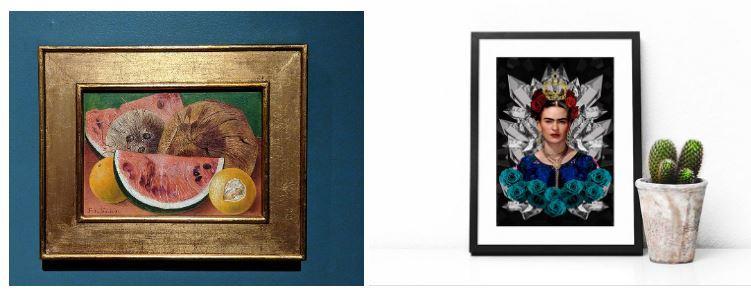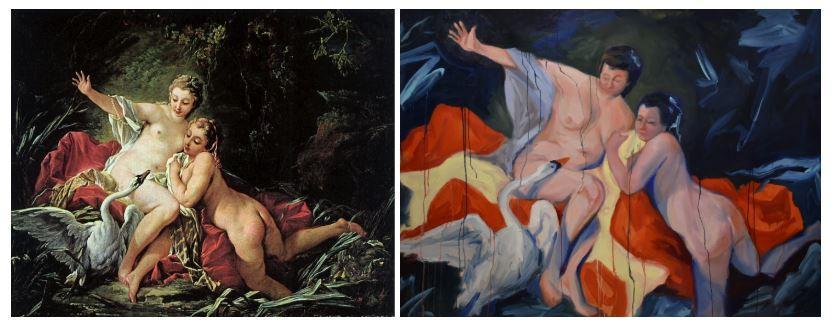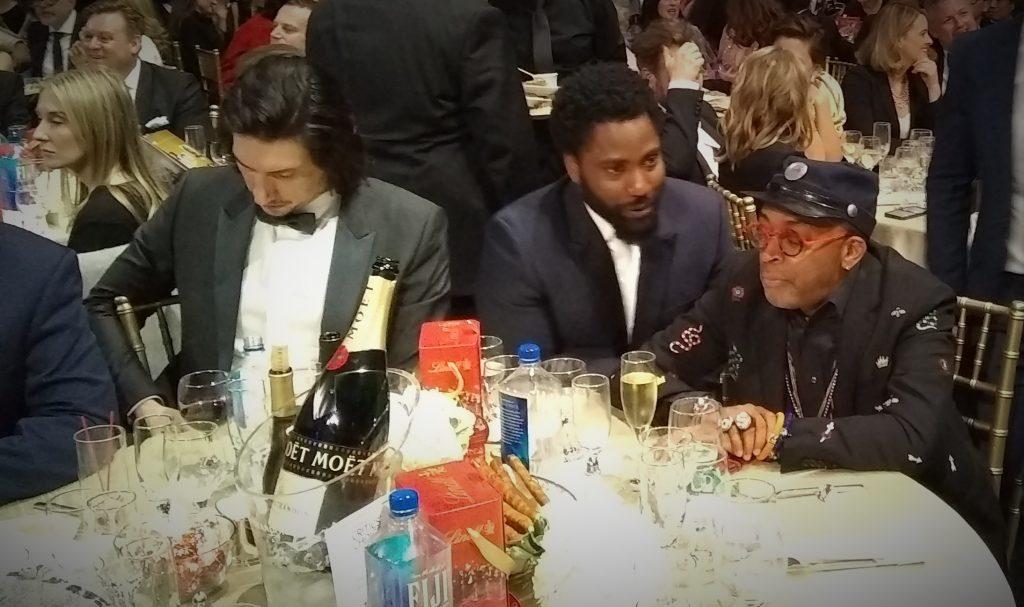12.4 Historical Impact on Today’s Families
Elizabeth B. Pearce; Hannah Morelos; and Jessica N. Hampton
Art has been a part of history and daily lives for centuries, but what is considered “artistic” and valuable as defined by financial worth has been shaped by the same preferences and oppression that shape other aspects of our daily lives. Many individuals face discrimination and underrepresentation based on their gender, race, sexuality, or other social characteristics. Even in the 20th century, we see the perceived differences between men’s and women’s art in the way that artists are often described in the media. Why is a woman referred to as a “female artist”? A person of color as a “Black photographer”? Or a “Latinx sculptor”? In contrast, when created by a White man, race and gender are not usually mentioned.
The topic of Whiteness as the dominant culture can be an uncomfortable topic for some while seeming quite obvious to others. Dominant culture expresses itself in the United States as the “typical” or “regular” way of being. Sometimes, White people express that they don’t actually have a culture. This is part of the Whiteness experience. When we describe this experience, it includes the power given to a particular group of people and the oppression of another group of people, otherwise known as White privilege. “Whitewashed art” can be described as giving privilege to a group of people based on their social characteristics and perpetuating a system that favors Euro-Americans.
When we talk about Whiteness in art, it allows us the opportunity to peel back a layer of denial. Western expansion and dominance of Indigenous communities is one reason that there is a preference for White and Westernized art and institutions. It is interesting to note that implicit bias, “the attitudes and stereotypes that affect our actions that we aren’t aware of, can affect how and what we feel and think about the word art when we hear it” (The Kirwan Institute for the Study of Race and Ethnicity, 2015).
What do you think of when you think of art? An example of implicit bias would be when an implicit bias and cultural norms shape how we respond to art. Individuals from any culture are more likely to view a work of art as pleasing if it fits with their culture’s dominant social characteristics. For example, one of the most famous sculptures in the world, The David by Michelangelo Buonarroti, shows a young White male, which is a dominant characteristic of Western culture. Traditionally, art that represents Western culture has been made, exhibited, and celebrated by White men. This bias affects who is considered an artist and what is considered art. A recent study found that 85% of artists featured in permanent collections are White, while 87% are men (Magazine & Solly, 2019). Our exposure to these institutionalized biases as children can affect how we view art.
Social institutions are complex systems that both influence their members and can be influenced by individuals as well. For example, schools and museums are both examples of institutions in which children and families participate. They are exposed to art that is, for the most part, White and male-dominated through the selection process that has occurred throughout history. Increasing awareness of these biases has led to exhibitions and mentorship of individuals in underrepresented groups related to gender, ethnicity, race, sexuality, ability, and other social characteristics. Individuals and allies contribute to institutions by advocating for change. Examples within this chapter show both the built-in biases and the ways in which artistic expression helps us move beyond socially constructed bias, preference, and ideas; this expands our definitions of art and beauty.
Art, Race, and Ethnicity
Ken Monkman is a North American artist well known for his paintings that reexamine the past. He frames his work by noting that these past experiences significantly influence the present. Monkman describes his use of visual art to examine the experience of Indigenous people in North America, both during the period of colonization and the effects on present-day families. His paintings depict the violence that European settlers acted upon Indigenous people and the cultural beliefs that have been silenced. He creates works of art that tell the story from the perspective of those who were harmed and emphasizes the heroism of Indigenous families, the nonbinary aspect of gender they expressed, and other cultural aspects.
In the video in figure 12.14, Monkman describes his use of visual art to examine the experience of Indigenous people in North America, both during the period of colonization and the continued effects on present-day families.
Kehinde Wiley is another artist known for using his work to expose hypocrisies in the framing of European history, such as the Age of Reason, or Enlightenment period, which is known for its progress in liberty, universalism, separation of church and state, and freedom. This same time period is known for the colonialism of many Indigenous people and people of color (POC), including Napoleon Bonaparte himself, who reinstituted slavery in the French colonies a year after the famous Jacques-Louis David portrait Napoleon Crossing the Alps was painted.

Wiley’s reinterpretation of this painting, Napoleon Leading the Army Over the Alps, pictures a young Black man in the same pose (figure 12.15) but in a way that questions the heroism and softens the military masculinity portrayed in the original. He confronts and critiques the portrayal of Black people in art.
The paintings hung side-by-side in the Brooklyn Museum through March 2020.
Art, Sex, and Gender
Art, which is reflective of society, has been dominated by men. Men’s work was more likely to be sponsored, commissioned, featured, publicized, and preserved. Women artists have often been seen as secondary. The artist Frida Kahlo was a Mexican painter who was inspired by artifacts of her culture and used a folk art style (figure 12.16). She explored themes of identity, postcolonialism, class, race, and gender. A prime example of marginalization taking place in Frida Kahlo’s lifetime happened when she lived in Detroit, married to a male artist named Diego Rivera. In Detroit, Frida Kahlo never showed her portraits in any exhibitions; however, she did get the opportunity to be interviewed. Although she was praised for her work through this opportunity, when the article came out, it was titled “Wife of the Master Mural Painter Gleefully Dabbles in Works of Art.”

Through this lens, Frida Kahlo was publicly known to her peers and the world as “Diego Rivera’s wife” and not as an artist. But Kahlo’s work surpassed Rivera’s in terms of artistic and social recognition. Kahlo died in 1954 at age 47, and her work became best known between the 1970s and 1990s. She is regarded as an icon of the Chicano civil rights movement, feminism, and the LGBTQIA+ community, as represented by the right-hand image in 12.16.
Many paintings considered classic representations of ancient myths and events were painted by men. Carmen McCormack, a 2019 graduate of Oregon State University’s Bachelor of Fine Arts program, has recreated some works from a female, feminist, and lesbian perspective. For example, she has reinterpreted François Boucher’s 1741 painting, Leda and the Swan, which tells the story of the seduction or rape of Leda by the god Zeus in the form of a swan (figure 12.17).

“I wanted to reinterpret that as a feminist, as a woman, and as a contemporary painter,” McCormack said in an interview with the Corvallis Gazette-Times. “In the original (the women) were smiling, which is interesting for a male painter because it reinterprets the story of sexual violence—it’s not a happy thing.” McCormack’s version shows a dark, stormy background, and the women’s facial expressions and body language suggest more fear and resistance than the original.
Centuries ago, genders were oppressed and underrepresented in their creative aspects. We can acknowledge that although there has been an improvement, there are still groups, genders, and individuals who face underrepresentation, discrimination, and oppression. New York is known as the hub of art, and yet it is estimated that 76% to 96% of the art showcased in art galleries is done by male artists. We can see that to this day, there is a gender gap in the art industry that continues into the 21st century.
Representation of People of Color
How are POC represented in visual mediums? And which POC are prominent? Notice that when leading roles are cast in visual mediums, they are often people of lighter-colored skin. This is called colorism and is distinct from racism in that it shows a preference for the visual look, as opposed to implying that there is inferiority based on race (Farrow, 2019). A recent example is the prominence of Jennifer Lopez (J-Lo) and Shakira in the 2020 Super Bowl halftime show. While both women are Latina, some POC do not feel represented by lighter-skinned people who have dyed their hair blonde.
Understanding “Isms”
Another way that film can help us to understand the world is to view how the oppression of “ism” affects a group that we are not a part of, such as understanding how women experience sexism, or Black people experience racism. But how do we identify which movies can help us understand what the actual experience is for the individual, and what “isms” feel like?
One of the best ways is to listen to a member of the group that experiences it. Podcasts, such as the 1A Movie Club’s episode “The Help Doesn’t Help” in June 2020, can help to explain how White-centered stories about racism fail to expose the actual experience of discrimination and to teach realistically and deeply. “White-centered” refers to stories that are told primarily from the White person’s point of view, with a lead or leads who are White, and sometimes feature what is called the “White savior,” meaning that it takes someone who is White to solve the problem, save the day, or otherwise fix some aspect of racism. Instead, the podcast hosts and guests recommend the following movies made by black artists, as pictured in figure 12.18, among others:
- 13th (2016)
- BlacKkKlansman(2018)
- Get Out (2017)
- I Am Not Your Negro (2016)
- Just Mercy (2019)
- When They See Us (2019)

If you’d like to make stronger connections between movies and the ways that they affect families, listen here to the 1A Movie Club’s lively discussion and debate about movies, Rotten Tomatoes, and other movie rating systems, racism, health care, the racial empathy gap, history, and current events.
Employment
While our discussion has focused on representation and on the effects that lack of representation has on families, it is important to mention employment. An obvious outcome of fewer POC or other minoritized groups in media is that people in these groups have fewer employment opportunities. A person who has multiple, intersectional characteristics has even fewer options. In the video in figure 12.19, actor Rosie Perez talks about how the intersection of gender, ethnicity, weight, attractiveness, and age affects her employment. Because movies influence so many consumers, the effects on Perez also indirectly affect the individuals and families who view media.
She conveys the message that while what is deemed “less desirable” by society may be acceptable for White males, it is less acceptable to have these traits as a woman of color. Note that her language may be triggering to some readers.
The video in figure 12.20 from the YouTube channel Film Courage contains similar descriptions from actors and actresses of color.
These descriptions by Rosie Perez and other actors are supported by research. Family films made between 2006 and 2009 in the United States and Canada were studied specifically for gender bias but also included appearance and age in the assessment. Twelve to fourteen percent of women with unrealistic body types, exposed skin, and waists so tiny that they would leave “little room for a womb or any other internal organs” are featured in these films. In addition, it is most common for women to be under the age of 39 years (about 74%), with a higher percentage of men over the age of 40 years (Smith & Choueiti, n.d.).
Comprehension Self Check
Licenses and Attributions for Historical Impacts on Today’s Families
Open Content, Original
“Historical Impact on Today’s Families” by Elizabeth B. Pearce, Jessica N. Hampton, Hannah Morelos, and Katie Niemeyer. License: CC BY 4.0.
Open Content, Shared Previously
Figure 12.15. “Napoleon Crossing the Alps” by Jacques-Louis David. Public domain.
Figure 12.16. “Poster – Frida Kahlo” by Vagner Borges. License: CC BY-NC-ND 4.0.
Figure 12.17. “Leda and the Swan” by François Boucher. Public domain.
Figure 12.18. “Adam Driver, John David Washington, and Director Spike Lee at the 2019 Critics’ Choice Awards” by Chris Miksanek. License: CC BY-SA 4.0.
All Rights Reserved Content
Figure 12.14. “Shame and Prejudice: Artist Kent Monkman’s Story of Resilience” © University of Toronto. License: Standard YouTube License.
Figure 12.15. “Napoleon Leading the Army over the Alps” by Kehinde Wiley. License: Fair Use.
Figure 12.16. “Coconuts” by Frida Kahlo. License: Fair Use.
Figure 12.17. “Leda and the Swan” by Carmen McCormack. License: Fair Use.
Figure 12.19. “Rosie Perez on Roles for Women of Color” © PBS. License: Standard YouTube License.
Figure 12.20. “Does Ethnicity Prevent Actors from Booking Work?” © Film Courage. License: Standard YouTube License.
References
Farrow, K. (2019, January 10). How the camera sees color. National Museum of African American History & Culture. Retrieved March 9, 2020, from https://nmaahc.si.edu/explore/stories/collection/how-camera-sees-color
Magazine, S., & Solly, M. (2019). Survey finds white men dominate collections of major art museums. Smithsonian Magazine. https://www.smithsonianmag.com/smart-news/survey-finds-majority-artists-represented-major-museums-are-white-men-180971771/
Smith, S.L. & Choueiti, M. (n.d.). Gender disparity on Screen and behind the camera in family films. Geena Davis Institute on Gender in Media. Retrieved June 2, 2020, from https://seejane.org/wp-content/uploads/full-study-gender-disparity-in-family-films-v2.pdf
The Kirwan Institute for the Study of Race and Ethnicity (2015). Understanding implicit bias. Retrieved February 18, 2020, from http://kirwaninstitute.osu.edu/research/understanding-implicit-bias/
the unequal treatment of an individual or group on the basis of their statuses (e.g., age, beliefs, ethnicity, sex).
a socially constructed expression of a person’s sexual identity which influences the status, roles, and norms for their behavior.
the categorization of humans using observable physical or biological criteria, such as skin color, hair color or texture, facial features, etc.
the pattern of romantic and/or sexual attraction to others in relation to one’s own gender identity.
the quality of being light or White skinned in color and the normalization of White racial identity throughout history in the United States.
the shared meanings and shared experiences passed down over time by individuals in a group, such as beliefs, values, symbols, means of communication, religion, logics, rituals, fashions, etiquette, foods, and art that unite a particular society.
an unconscious tendency to favor one person, group, or point of view over another usually based on social characteristics such as gender, sexuality, race or socioeconomic status.
the shared social, cultural, and historical experiences, stemming from common national, ancestral, or regional backgrounds, that make subgroups of a population different from one another.
a person who forms relationships with and advocates with or for others who are marginalized but do not have that marginalized identity themselves.
the developmental changes and transitions that come with being a child, adolescent, or adult.
making degrading comments, touching in unpleasant means of harm, or addressing a partner in a degrading way during sexual intercourse, which includes marital rape.
prejudice or discrimination that favors people with lighter skin over those with darker skin, especially within a racial or ethnic group.
can include the emotional significance of an action or way of being; the intention or reason for doing something; something that we create and feel; closely linked to motivation.
the state of complete physical, mental, and social well-being and not merely the absence of disease or infirmity.
the description or portrayal of someone or something in a particular way.
a systematic investigation into a particular topic, examining materials, sources, and/or behaviors.
a method by which sociologists gather their data by asking questions.

